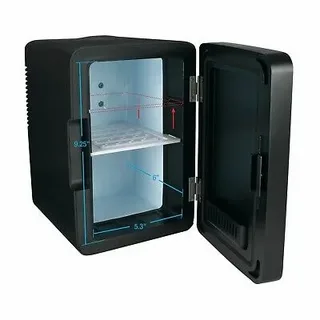Compact refrigerators are a lifesaver for small apartments, dorm rooms, offices, and even outdoor entertainment areas. However, like any appliance, they require regular cleaning and maintenance to ensure optimal performance and longevity. In The Ultimate Guide to Cleaning and Maintaining Your Compact Refrigerator, you’ll learn the essential steps and best practices to keep your mini fridge running smoothly and looking brand new.
Why Regular Maintenance Matters
Neglecting your compact refrigerator can lead to several problems:
- Unpleasant odors
- Mold and mildew buildup
- Inefficient cooling
- Increased energy consumption
- Shorter appliance lifespan
Routine care not only prevents these issues but also saves you money in the long run by avoiding costly repairs or replacements.
Cleaning Your Compact Refrigerator: Step-by-Step
1. Unplug and Empty the Fridge
Before anything else, unplug the refrigerator to ensure safety. Remove all food items, shelves, and drawers. Dispose of expired or spoiled food.
2. Clean Removable Parts
Wash shelves and drawers with warm, soapy water. Rinse thoroughly and let them air dry or wipe with a clean towel.
3. Wipe the Interior
Use a solution of baking soda and water (2 tablespoons of baking soda per quart of warm water) to wipe down the inside of the fridge. Avoid harsh chemicals that could damage surfaces or leave strong odors.
4. Clean the Door Seals
Use a toothbrush and mild soapy water to gently scrub the rubber gaskets around the door. These seals help keep cold air inside, so keeping them clean and flexible is essential.
5. Defrost If Needed
If your compact fridge isn’t frost-free, you may need to defrost it occasionally. Turn it off, leave the door open, and allow the ice to melt. Place towels around the base to catch dripping water.
Maintaining Your Compact Refrigerator
1. Keep It Level
Ensure your refrigerator is sitting on a flat, stable surface. A tilted fridge can cause the door not to close properly and affect cooling efficiency.
2. Leave Space for Ventilation
Position your refrigerator at least a few inches away from the wall to allow proper airflow. This helps prevent overheating and improves energy efficiency.
3. Check the Temperature Settings
For optimal cooling, set the internal temperature between 37°F and 40°F. The freezer should be around 0°F.
4. Clean the Exterior
Dust off the exterior regularly, especially the coils if they are accessible. Dirty coils can cause the compressor to work harder, leading to higher energy use.
When to Call a Professional
If your compact fridge starts making unusual noises, leaks water, or fails to cool despite all efforts, it might be time to call a technician. Regular maintenance can prevent many issues, but some problems require professional attention.
Final Thoughts
Maintaining a clean and efficient compact fridge doesn’t have to be complicated. By following The Ultimate Guide to Cleaning and Maintaining Your Compact Refrigerator, you ensure your appliance remains in peak condition for years to come. Make cleaning a monthly habit and monitor its performance regularly to catch issues early.
Whether you’re a student, a busy professional, or someone who just loves a cold drink on hand, The Ultimate Guide to Cleaning and Maintaining Your Compact Refrigerator ensures your investment stays cool—literally and figuratively.

